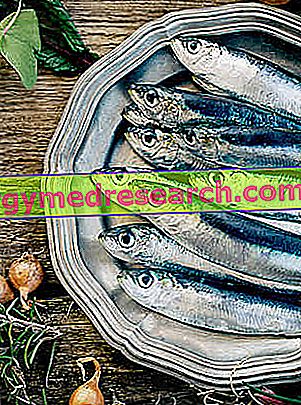Generality
Popcorn or " popcorn " or " popping corn " is a cooked food based on corn seeds belonging to the genus Zea, Species mays, Everta Variety.

As many will know, a variable quantity of seeds does not burst and does not produce popcorn. This phenomenon can mainly be due to:
- leaks or cracks in the grain coating;
- carbonization of the coating during cooking;
- uneven heat distribution;
- heating too slow which leads to the evaporation of water through the area where the grain is placed on the cob.
The popcorn home cooking techniques are the pan or the microwave oven, respectively fitted with a lid or a hermetically sealed bag (to prevent popcorn from bouncing everywhere). Currently, there are commercially available appliances for the production of popcorn, even though, like microwaves, they require the use of pre-processed maize.
Curiosities : popcorn, in addition to being a very popular food, is frequently used in the USA for holiday decorations or, recently, as shock absorbers to be placed inside packaging.
Background
Although it may seem a "cutting edge" food, the findings indicating the first popcorn corn crops date back to 4, 700 BC and were discovered in the regions of present-day Peru and Mexico; however, today popcorn is considered a typical American food.
Incredibly, in the period of the great depression of the 1900s, popcorn (contrary to all other foods) acquired an excellent commercial value that continued to grow until the Second World War (consumption increased up to 300%, considerably damaging the confectionery industry ). Currently, the area of the new continent that holds the most popcorn production is the Midwest, in particular: Ridgway (Illinois), Valparaiso (Indiana), Van Buren (Indiana), Schaller (Iowa), Marion (Ohio) and North Loup (Nebraska). Texas is also growing strongly.
Types
The popcorns are not all the same; many differ in the color of the pericarp (purple, orange, yellow, red), while the foam is always white or yellowish. The seed shape distinguishes the rice varieties (elongated) from the pearl (more spherical); moreover, the same cob may originate seeds capable of producing flakes of two different forms: butterfly and wings ; the latter form (often obtained uniformly from botanically selected plants), lends itself more to storage in a bag, while the butterfly is certainly more pleasant to the touch.
Pop Corn Sweets and Colored
X Problems with video playback? Reload from YouTube Go to Video Page Go to Video Recipes Section Watch the video on youtubeConsumption
Popcorn can be eaten natural or with the addition of other ingredients. In Italy, popcorn is simply salty and, at the very least, greasy to avoid sticking to the pan during cooking. In the USA, however, popcorn is often seasoned with melted butter, caramel, sugar, topping etc; in Mexico they accompany it with jalapeno sauce (chilli), cheese and melted butter; in Peru, in addition to the classic salted popcorn, they consume it with condensed milk and sugar.
Nutritional characteristics
| Popcorn nutritional composition - Reference values of the INRAN Food Composition Tables | ||||||||||||||||||||||||||||||||||||||||||||||||||||||||||||||||||||||||
 | ||||||||||||||||||||||||||||||||||||||||||||||||||||||||||||||||||||||||
Nutritional values (per 100 g of edible portion) | ||||||||||||||||||||||||||||||||||||||||||||||||||||||||||||||||||||||||
| ||||||||||||||||||||||||||||||||||||||||||||||||||||||||||||||||||||||||
Let's start by pointing out that the "American Academy of Pediatrics" has long included popcorn among the foods that should NOT be given to children under the age of 4, due to the high risk of suffocation. Moreover, in many microwavable popcorns there is an ingredient still under study: "the artificial butter-flavorants "; this, containing diacetyl [butanedione or butane-2, 3-dione - (CH3CO) 2] may be responsible for triggering respiratory diseases.
As for the consumption of "natural" popcorn, there are no particular contraindications to consumption, although it is always advised not to overdo the portions. On the other hand, popcorn is certainly among the foods to AVOID for those suffering from intestinal diverticulosis, since the residues of the fibrous pericarp tend to trigger the acutiae, therefore diverticulitis.
Given the tendency of Italians to consume salty popcorn, it is also worth mentioning that sodium is a potential risk factor for the onset of high blood pressure, thus increasing cardiovascular risk.
As for all the other forms of pop corn seasoning: melted butter, chocolate, various toppings, caramel etc., these are foods to avoid as much as possible. All bring excessive amounts of calories, saturated fat, cholesterol and simple sugars, unbalancing the nutritional balance of the diet and favoring an increase in blood sugar, cholesterol, as well as tooth decay.
In itself, natural popcorn is NOT a food to be renounced. It supplies mainly starch and some proteins with a medium biological value, even if the scarce presence of water favors the increase in the caloric density of the meal (high) and tends to increase its consumption portions due to its reduced satiating capacity. The fiber is abundant but predominantly NOT viscous.
From a vitamin point of view, popcorn seems to be rich in B-complex vitamins (thiamine, riboflavin and niacin), while as far as mineral salts are concerned we can deduce excellent amounts of iron, potassium and phosphorus.



